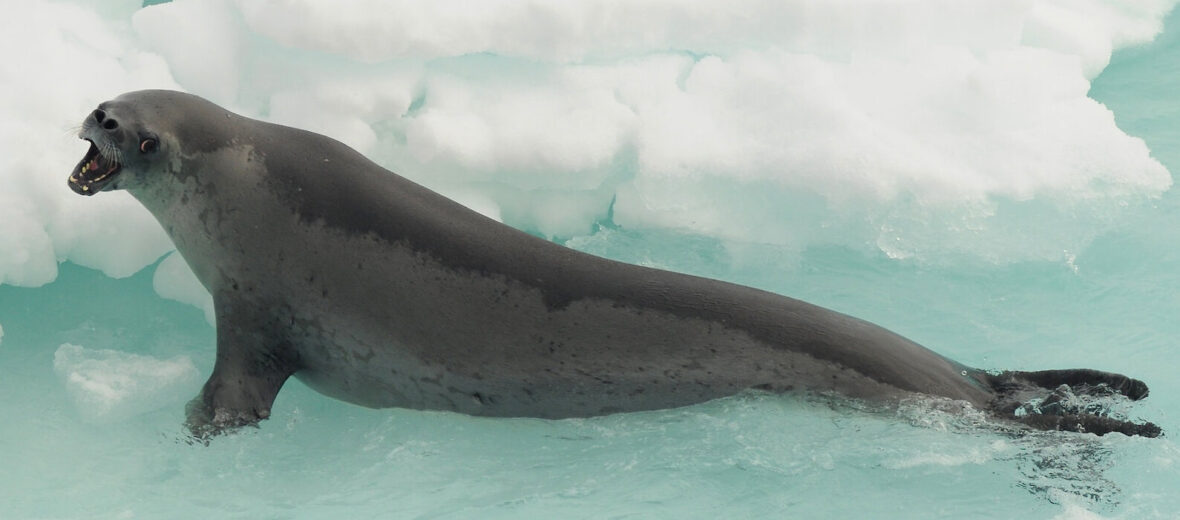
The crabeater seal, or more aptly named krill-eater seal, is misnamed as this species of seal doesn’t even eat crabs. They primarily eat krill. There isn’t an abundance or crab species that live in Antarctica to eat any way. They were misnamed by early explorers. These seals are the most abundant of any known seal species in the world, with an estimated 8,000,000+ strong population! Due to this fact, they are listed as Least Concern by the IUCN.
First the Stats…
Scientific name: Lobodon carcinophagus
Weight: Up to 660 lbs.
Length: Up to 8.2 feet
Lifespan: Up to 20 years
Now on to the Facts!
1.) Their diet consists of krill, cephalopods, and fish.
2.) They are preyed on by leopard seals and orcas.
3.) Crabeater seals have evolved a sieve-like tooth structure which filters krill, much like that of baleens on whales. They simply suck in water complete with krill, close their jaws, and then force the water back out between their specialized teeth, trapping the tasty krill inside.
4.) Crabeater seals are “true” or “earless” seals.
5.) They are found throughout the pack ice of Antarctica. These seals have even been seen as far north as Australia, New Zealand, South Africa, South America, and Tasmania.
But wait, there’s more on the crabeater seal!
6.) A group of seals is called a bob, pod, harem, herd, rookery, or colony.
7.) While mostly solitary, they can be found in small pods.
Did you know…?
A crabeater seal can move on land at speeds of up to 16 mph. They can swim at speeds of up to 13 mph.
8.) Crabeaters are monogamous (mate for life).
9.) Breeding takes place from October – December.
10.) Females undergo delayed implantation. This is where the females will hold on to the male’s sperm for up to 11 months. Only becoming pregnant when weather conditions are optimal.
But wait, there’s still more on the crabeater seal!
11.) Their numbers seem to be tied directly to baleen whale populations. As whaling resulted in the slaughter of countless whale populations, the competition for krill was all but removed. This paved the way for other krill-eating species to flourish. Now that whaling is illegal, will their populations decline?
Did you know…?
The crabeater spends 8 – 10 hours a night feeding, diving over 100 times.
12.) Pregnant females will move out to ice floats, by themselves, to give birth to a single pup. Once they have nursed the pup for 3 weeks, dad will take up residence on the same ice float and fiercely guard mom and her pup from threats, till the pup is weaned.
13.) When threatened, they will hiss, snort, and roll over repeatedly. They will also bare their teeth.
14.) These creatures are primarily nocturnal (active at night).
15.) Sadly declining sea ice throughout Antarctica, due to climate change, has led to a huge decline in krill populations. This means there simply might not be enough food to feed the millions of seals actively living throughout the Antarctic Continent.
Now a Short Crabeater Seal Video!
Also, check out the Critter Science YouTube channel. Videos added frequently!
Want to suggest a critter for me to write about? Let me know here.



